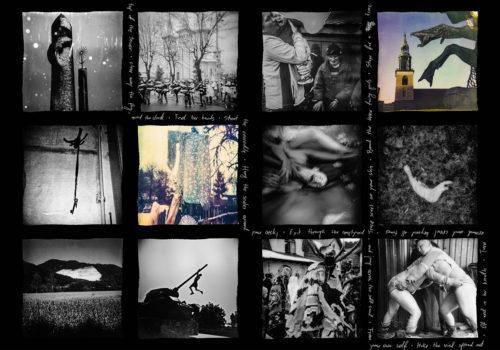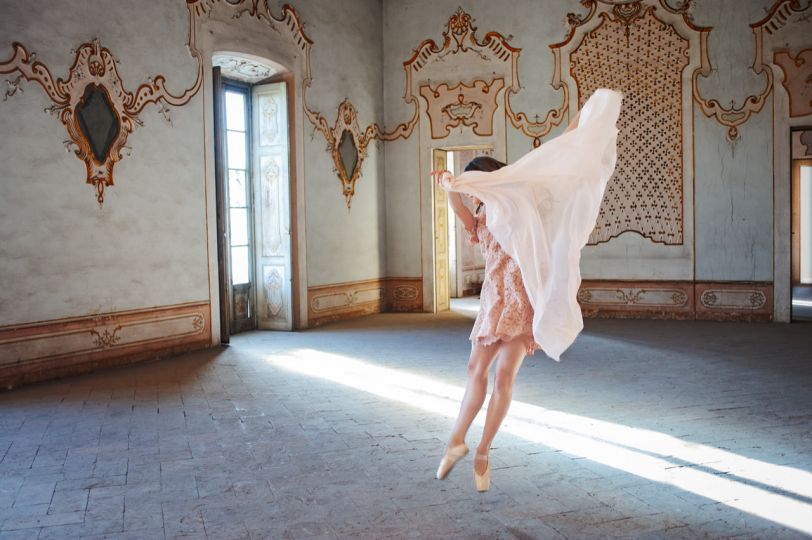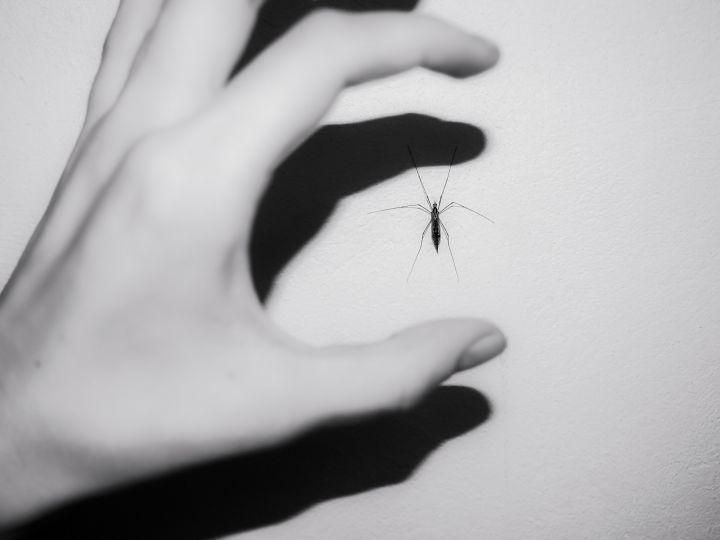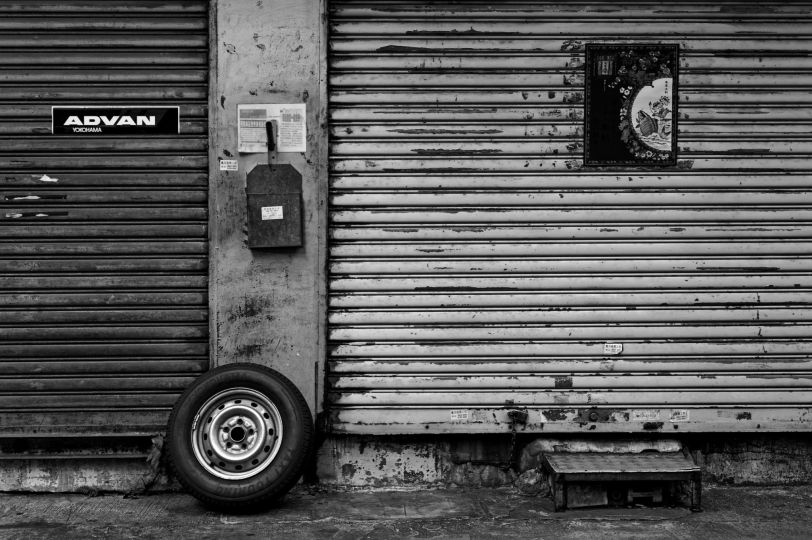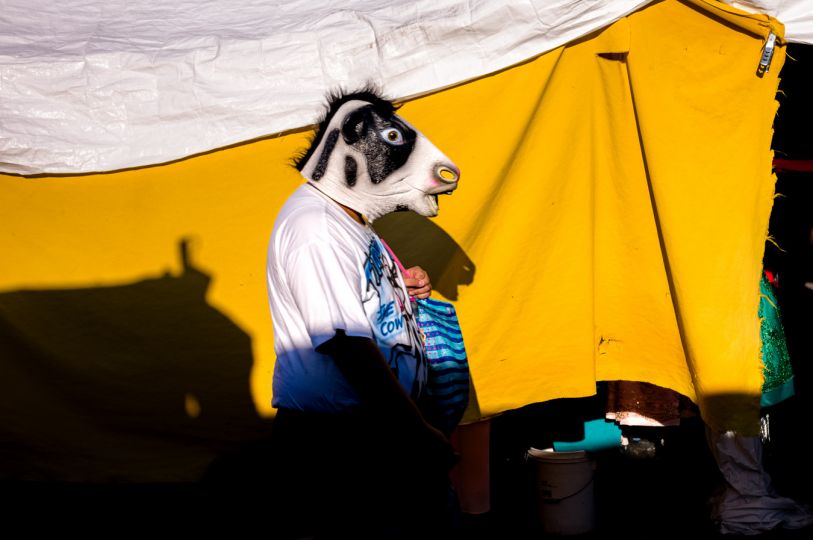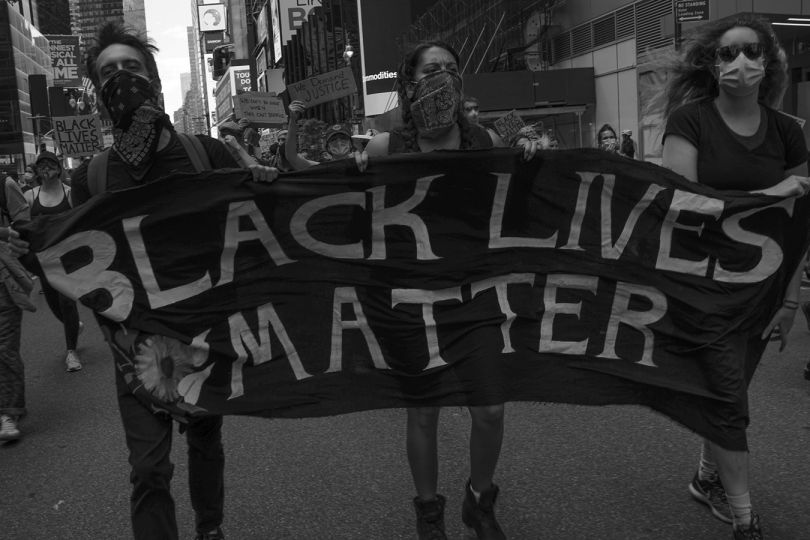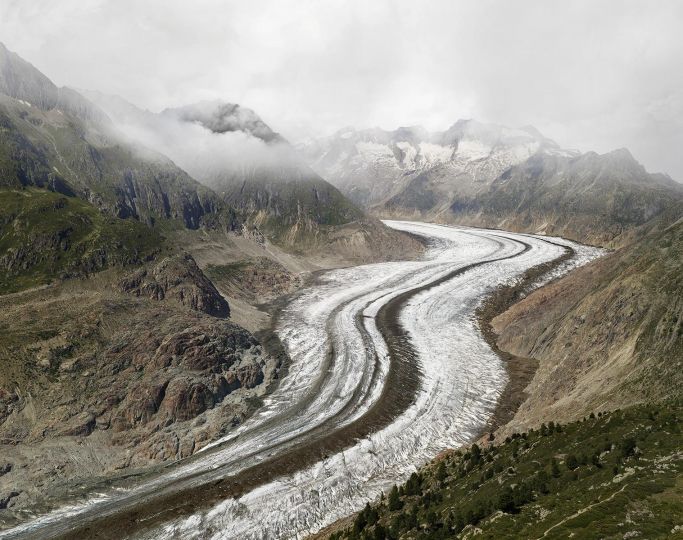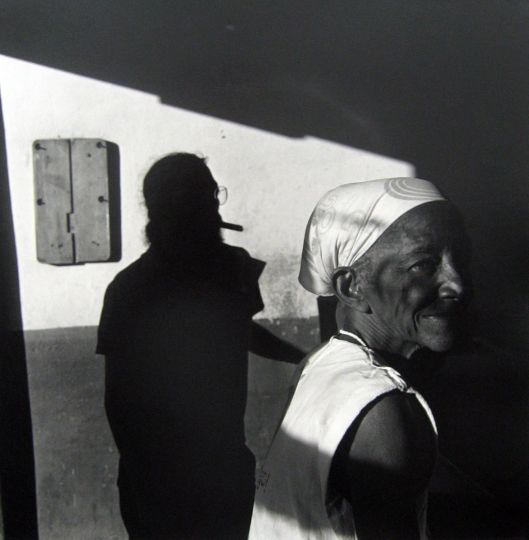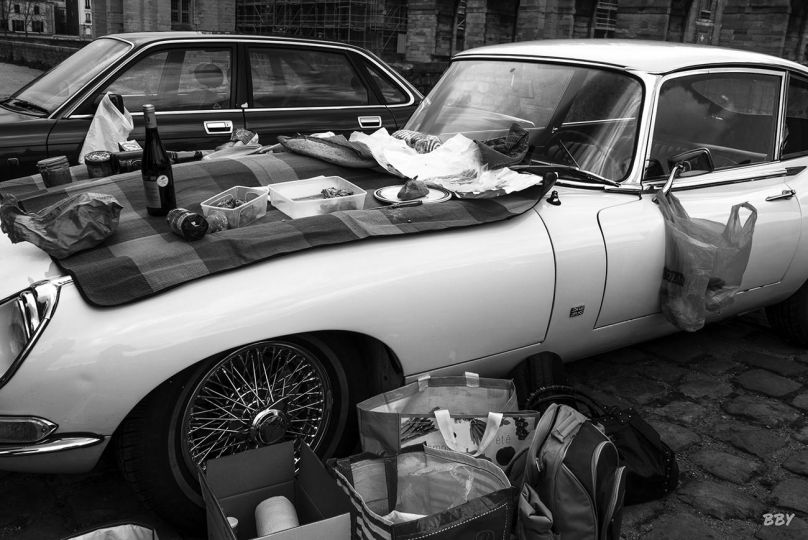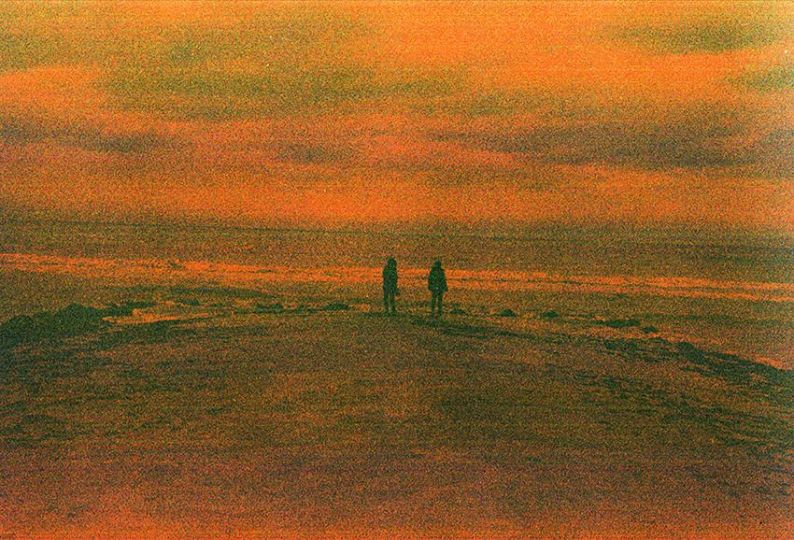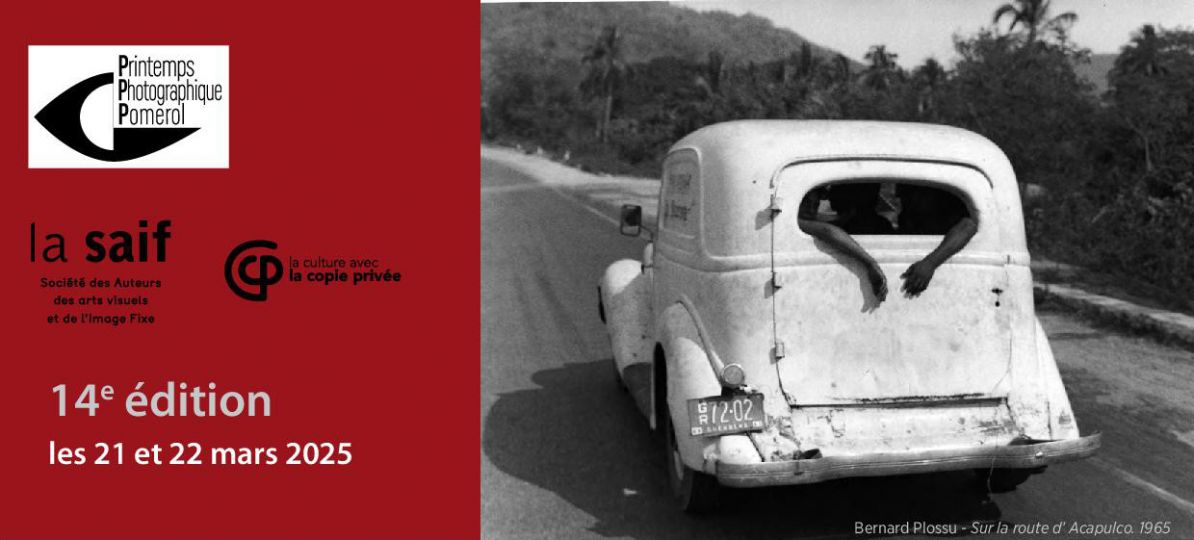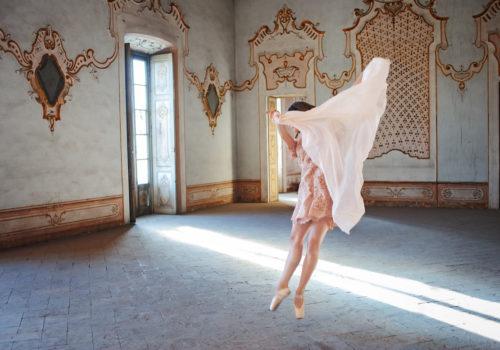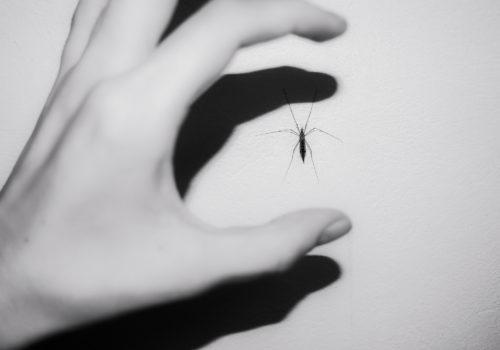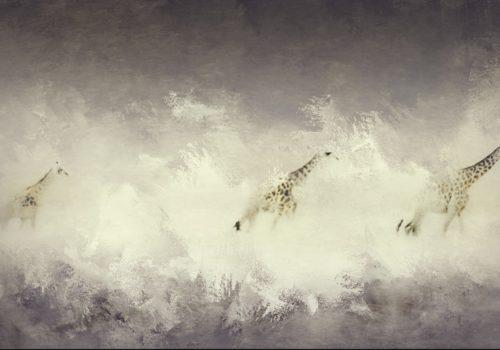I met Piotr during my work for the extensive exhibition on Polish contemporary photography, “State of Emergency. Polish Photo Art Today,” back in 2023 at the Zitadelle Spandau in Berlin.
His work “Solid Maze of All That’s Left Untold” immediately spoke to me, and resonated for a long time. I just loved its darkness, the seemingly countless little objects, cross-references and mysterious tales which were part of this extensive and large scale “assemblage.”
Thus, we stayed in touch and enjoyed doing a proper recap on his latest works and book. Enjoy the read and dive into the spiritual world of Zbierski.
Nadine Dinter: In the winter of 2024/2025, your latest book “Solid Maze of All That’s Left Untold” was published. Here, readers dive into your personal photographic maze, which consists of dark and mysterious images, enthralling storytelling, and often harsh close-ups. In a never-ending flow, you mix visuals from foreign countries, seemingly familiar scenes, and protagonists whose roles remain ambiguous—are they friends or foes? How did you put things together and curate the book?
Piotr Zbierski: This is a very important book for me, both personally and artistically. Designing it was an opportunity to reflect on the photographic path I embarked on many years ago. In recent years, I have felt the need for a moment of tranquility and self-reflection, and I think the time for such a book came naturally.
This is my third publication and the first that I designed entirely on my own. In my first two books, “Push the Sky Away” and “Echoes Shades,” I was responsible for sequencing, narrative, and storytelling, while the graphic design was a collaboration with a designer. Although I had complete creative freedom in these books, their storytelling and structure were different.
With “Solid Maze of All That’s Left Untold” I felt that the only right way to approach the creative process was to take full control—from the first proofs to the final version. I wanted to reflectively walk this path because, in many ways, this book is similar to a visual diary. The process of creating it was deeply personal, almost meditative.
“Solid Maze” contains over 300 photographs and many personal notes juxtaposed with the images. It also includes an insert with an essay I wrote over the past few years. The book features pictures spanning the last 20 years—90 percent of which had never been published before.
During its creation, I was deeply struck by Confucius’ words: “We have two lives. And the second begins when we realize that we have only one.”
This sentiment profoundly shaped the book. As I worked on it, I experienced something akin to catharsis—it felt both therapeutic and necessary to express what had remained unspoken.
At a certain point in life, one experiences a sense of infinity—a time when the resources of time, emotions, and relationships seem unlimited. The time for longing and love feels boundless. But eventually, this changes, and the limitless perspective gives way to the realization that what has happened may be the only story.
I believe the years spent creating “Solid Maze” marked such a turning point for me, and the book’s completion divides my artistic journey into what came before and what will come after. This is a book about time—its absolute and continuous nature. But also about the dimensions of time—how we can perceive and feel its “width” and “height,” not just its “length.”
It is also a book about love—the kind of love that exists regardless of circumstances or presence.
Together with the book, you created a unique concept called “Edition 777 – Let’s Share the Print.” Can you tell us about its origin and the idea behind it?
PZ: The “Edition 777” concept was developed in parallel with “Solid Maze” as a special edition launched to celebrate the book’s release. I selected 33 photographs for this edition. Each “Edition 777” package consists of three elements:
- A collector’s print of a selected photograph, framed in passe-partout and printed on archival Hahnemühle Agave paper.
- A unique fragment of the same photograph printed on glass, assigned at random, and also framed in passe-partout.
- A short personal note included in the set.
The sheets of glass on which I exposed the photographs were broken into smaller fragments. This was my way of creating what is known as a Voronoi diagram—a pattern that mimics how nature divides matter into irregular shapes.
Each “Edition 777” package, therefore, contains a selected print, a unique fragment of it, and a text corresponding to the printed image.
With this edition, are you targeting a new group of collectors or even people who aren’t traditionally involved in collecting photography?
PZ: With this special edition, I wanted to make selected photographs accessible to everyone. The price of each set is intentionally surprising. In a way, this is my way of expressing gratitude to those who engage with my work and an attempt to challenge the idea that photography is only available to a small group of wealthy collectors.
Do you believe in traditional fine art print editions? If so, what edition sizes do you typically work with?
PZ: I believe in both traditional fine art print editions and special editions that are more accessible. However, I think it’s important to keep them separate. My regular editions are usually limited to 10–12 prints. “Edition 777,” on the other hand, was created only with images that were excluded from my regular editions.
Part of your philosophy and artistic approach revolves around storytelling and time. How does “Solid Maze” differ narratively from your previous books?
PZ: I’d like to reference an excerpt from the book’s introduction, as I believe it captures the spirit in which “Solid Maze” was created:
“More and more, I think of photography as a river, where one stands on both banks simultaneously. On the first shore, there are structured, intentional narratives enclosed in books and exhibitions—stories that are carefully curated to be seen and understood. But on the other shore there is a vast archive of photographic negatives, contact sheets, and emotional and factual memory. A solid maze of all possibilities and all that’s left untold. Here, the story remains open-ended, like an ongoing conversation—one that has the chance to become more about listening than speaking.”
Your next presentation will take place at Art Central Hong Kong in March through the An.Inc. Gallery. Which works will be shown?
PZ: My presentation at Art Central Hong Kong is the result of my long-term collaboration with the South Korean gallery An.Inc. I will be exhibiting 17 photographs curated from the new book. It will also be the first time “Solid Maze” is presented in Asia.
Your upcoming exhibitions will be curated from “Solid Maze,” which contains over 300 images. Is it possible to define your favorites? How do you select images for your exhibitions?
PZ: Throughout my artistic career, I have always worked intuitively, letting life itself shape my creative process. I don’t have favorite photographs, but rather, favorite periods of my life. However, there are images that have profoundly influenced me, and some of them appear in “Solid Maze,” often accompanied by their context.
You have been working in Iceland recently. Can you share insights on this project?
PZ: In recent years, Iceland has become my second home—I now live between Reykjavík and Poland. Many of the photographs in “Solid Maze” were taken in Iceland. For instance, I have captured natural formations that resemble human-like faces—remnants of snow shaped into portraits or waterfalls that appear like skulls and bones within the landscape.
Do you work alone, or do you collaborate with a team in a studio? And what camera have you been using lately?
PZ: Nowadays, I mostly work alone. In the past, I traveled with friends to make photographs, but even then, we each worked on our own projects rather than collaborating on a single piece.
Technically, I use a variety of photographic methods: analog photography, Polaroids, and sometimes even mobile photography and digital cameras. I believe that tools should adapt to the situation, not the other way around.
Your advice for up-and-coming black-and-white photographers?
PZ: What makes photographers unique is not just how their images look, but the personal reasons behind creating them. The process of making a photograph starts long before and continues long after the image is taken.
My advice:
- Stay honest with your reasons for taking photographs.
- Remember that photography is rooted in love for people.
- Acknowledge time as a third axis—photography has the power to communicate time in ways our senses cannot.
For more information, check out the artist’s IG account @piozbierski/ and make sure to visit his website www.piotrzbierski.com
Current & upcoming exhibitions:
26-30 March – ART CENTRAL HONG KONG (art fair) – with An.Inc Gallery
7-13 July – Rencontres d’Arles – in A Space For Photography – with An.Inc Gallery. Exhibition based on Solid Maze book
13 September – 21 December 2025 – LA Museum Iceland, Hveragerdi. Individual Exhibition “Solid Maze Of All That’s Left Untold”
Autumn 2025 – Individual Exhibition in An.Inc Gallery – Seoul, South Korea

